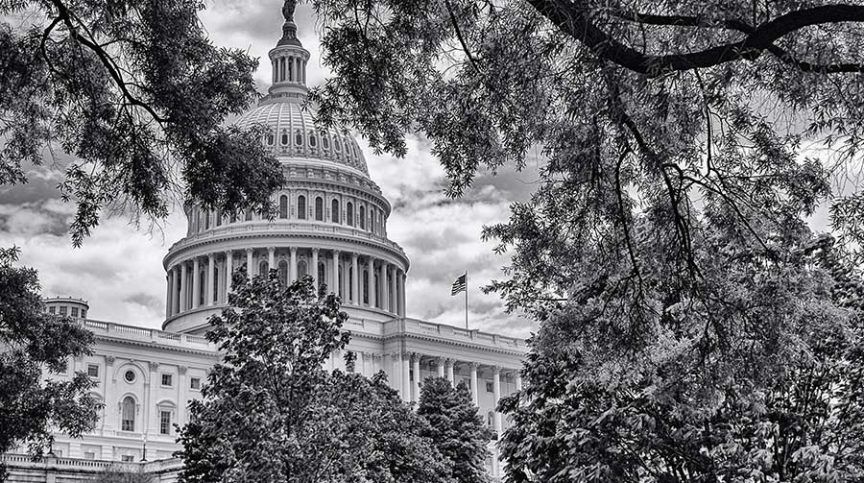For the last four years, I’ve been working as an attorney in the housing sector in California. I have worked directly with tenants at risk of being evicted; and I have also worked on the policy side with those fighting for legislative change at the local, state, and federal level. On both fronts, I have witnessed the massive failure of our government to preserve and increase affordable housing.
Housing is a basic essential need and therefore should be a right of all U.S. citizens. In a 2022 report, the authors state, “Federal law does not yet recognize a right to housing, in the Constitution or via legislation. The United States Constitution only protects civil and political rights such as freedom of speech and trial by jury. It does not recognize social and economic rights, such as food or housing. Federal housing legislation grants the government discretion to assist persons in need, but it does not go as far as recognizing a general right to housing. This leaves federal agencies under no specific obligation to uphold housing rights.”
As an attorney working in the housing sector, I witnessed firsthand how a lack of security in housing can send people into a downward spiral impacting their mental health and their ability to find or keep a job. Why is that? Because if you do not have a safe and comfortable place to eat and sleep at night, it becomes harder to maintain a routine and preserve stability in your mind, body, and soul. This is why shelter is at the base level of the pyramid set out by Maslow’s hierarchy of needs.
When I worked as an eviction-defense attorney at a Legal Aid in Northern California serving low-income communities, I witnessed how easy it was for families to end up living on the streets. Sometimes the root cause was divorce that left a single mom to have to work part-time while being the sole care-giver for her young children. Other times it was an injury that forced an elderly person out of the work force and into massive credit card debt, leaving them unable to pay their rent. There were so many instances when a little bit of misfortune or misdirection had a domino effect and caused people to be at risk of losing everything.
Now, as I work on the policy side, fighting for reform at the local and state level, I have learned how the government, both at the state and federal levels, is ill-equipped to help our most vulnerable individuals and families stay housed or get housed. I have also learned about ways that we can forge ahead to find positive and long-lasting solutions.

Current State of Affairs
Two years ago, I wrote an article about homelessness in the aftermath of the 2020 covid-19 crisis. At that time, there were lingering protections in place to keep tenants who had been impacted by the pandemic housed. Since then, the housing crisis has worsened.
The number of homeless persons has been increasing due to rising inflation and out-of-reach rents. There is research that rising rent costs lead to an increase in homelessness of both individuals and families The numbers show a rise in homelessness among Hispanics and Blacks. Nearly 40% of the unhoused were Black and a quarter were seniors. Those numbers do not take into account individuals who are at risk of being homeless – those sleeping on their friend’s or family member’s couch or who live with multiple families in one house.
It has traditionally been thought that homelessness is a problem in big cities like Los Angeles, New York, and D.C, but it has spread to historically more affordable parts of the country. Texas, Ohio, and Arizona are just a few of the states with a reported growth in unsheltered populations due to rising local housing costs.
Harvard’s Joint Center for Housing Studies found that roughly 653,000 people reported homelessness in January of 2023. That figure was a 12 percent increase from the same time a year prior. Harvard researchers report that as the largest single-year increase in the country’s unhoused population on record.
Possible Solutions: A Fork in the Road
States like California have attempted to use a coordinated effort of state and federal funds to improve shelter options. Programs like Homekey and Project Roomkey have helped tens of thousands of Californians stay off the streets.
While these programs have shown positive effects for vulnerable communities, it is not enough. It has proven to be only a band-aid approach to solving the housing crisis. Because billions of federal pandemic relief funds have expired for California, and the $97.5 billion surplus from 2022 has dried up, there is now a “funding cliff.” Without new avenues for funding, the California housing crisis may slip backwards rather than move towards achieving its goals.
Lawmakers and housing policy analysts say that there is a fork in the road: one way is to innovate and dedicate ongoing funding to development of affordable housing; the second way is to continue to make ad hoc investments that are nothing more than band-aid fixes to a massive problem. The first option addresses homelessness as an ongoing challenge that compels hands-on creative solutions, coupled with reforms to justice, health, and the foster care systems.
There must be a willingness to consider radical change like “social housing,” a European term that refers to “government-owned or regulated affordable housing,” in practice in Vienna and Singapore as two prime examples.
 Social housing was popular in the U.S. in the 1930s during the Great Depression. It was a mixed-income type of housing sponsored by tenant and labor unions. Last year, California passed SB555, the first state “social housing” legislation in the U.S., which requires the state “to produce a study and recommendations on expanding the state’s social housing sector.” Social housing tackles the housing crisis by removing the development of housing from only the hands of for-profit entities. It prioritizes setting rent prices at rates that individuals and families can practically afford. By re-tooling and re-investing in housing models like community land trusts and public housing, we can expand on availability and affordability of housing.
Social housing was popular in the U.S. in the 1930s during the Great Depression. It was a mixed-income type of housing sponsored by tenant and labor unions. Last year, California passed SB555, the first state “social housing” legislation in the U.S., which requires the state “to produce a study and recommendations on expanding the state’s social housing sector.” Social housing tackles the housing crisis by removing the development of housing from only the hands of for-profit entities. It prioritizes setting rent prices at rates that individuals and families can practically afford. By re-tooling and re-investing in housing models like community land trusts and public housing, we can expand on availability and affordability of housing.
I believe we need to continue to push for radical change like California’s social housing bill. To find long-lasting affordable housing solutions, we need to take a look into our past efforts to address this challenge, to incentivize new and creative ideas, and also to look at practicable and effective programs that exist in other countries. Both the states and the federal government must pool resources in order to build lasting solutions rather than quick fixes to a worsening crisis.






